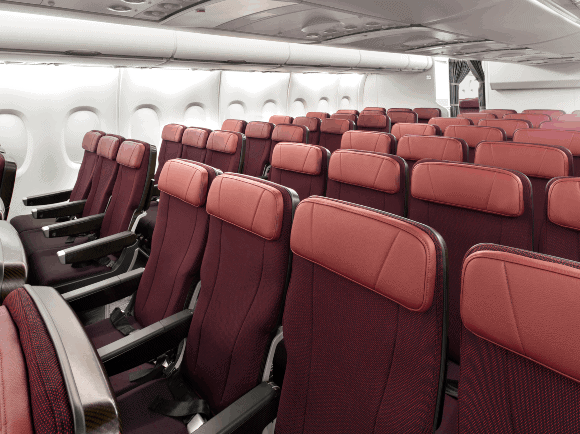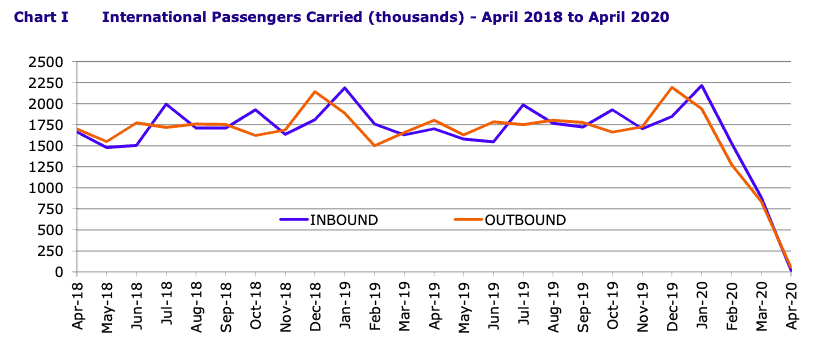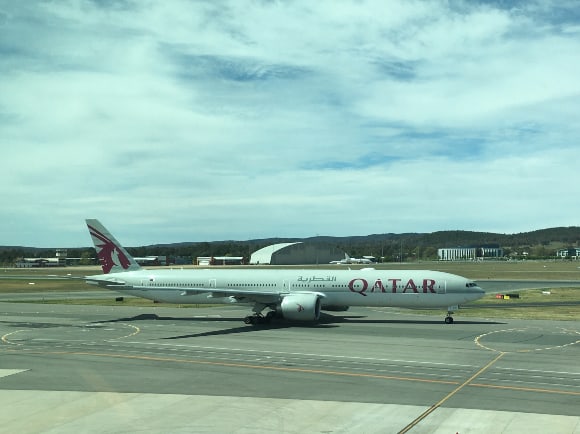Australian International Flights Down 98% in April 2020
 There was a 98% reduction in international passengers travelling to and from Australia in April 2020, compared to the previous year, despite a surge in people leaving Australia on repatriation flights. Almost half of those passengers flew with Qatar Airways. There was also a 97.2% reduction in domestic airline passengers travelling within Australia in April 2020.
There was a 98% reduction in international passengers travelling to and from Australia in April 2020, compared to the previous year, despite a surge in people leaving Australia on repatriation flights. Almost half of those passengers flew with Qatar Airways. There was also a 97.2% reduction in domestic airline passengers travelling within Australia in April 2020.
According to data from the Bureau of Infrastructure, Transport and Regional Development (BITRE), just 16,211 people arrived in Australia on international flights in April 2020. Some flights carried as few as one or even no passengers. By comparison, 1.7 million international passengers arrived in Australia during April 2019.

The alarming statistics show the devastating impact of Australia’s coronavirus travel restrictions on the aviation and tourism industry. The Australian government temporarily banned non-Australian residents from coming to the country, and banned Australians from leaving without an exemption, from March 2020. All 16,211 people that landed in Australia in April 2020 would have been quarantined for 14 days on arrival.
During April, 18 airlines that normally operate passenger services to Australia did not fly here at all. Many of the other airlines that did fly to Australia did so with a greatly reduced schedule, or for one-off repatriation flights.
The April 2020 figures may be devastating, but at least there was still a little bit of demand for repatriation travel. The May figures, when released, are likely to be even worse.
Many more people left than came to Australia
Only 16,211 citizens, permanent residents and their immediate family members arrived in Australia in April. But 53,265 people – triple that number – left the country. It shows that there are normally many more temporary visitors in Australia than there are Australians overseas at a given point in time.
This is also reflected in the mix of inbound and outbound passenger numbers for many airlines during April, particularly Chinese carriers which flew far more people from Australia back to China than in the other direction.
China Airlines, based in Taiwan, operated 33 return flights from Taipei to Australia during April. It flew just 146 passengers to Australia during the entire month – filling 1.4% of seats on inbound flights – but filled 15.7% of seats on flights back to Taiwan.
Asiana Airlines did not fly any commercial passengers to Australia during the month, but averaged a 94.6% load factor (percentage of seats occupied) on 8 outbound flights from Sydney to Seoul.
Meanwhile, Aircalin carried just 8 passengers from Noumea to Australia on 7 flights during April. But it flew 310 people back to New Caledonia.
Qatar Airways dominated the market
Qatar Airways flew a staggering 44.5% of international passengers to and from Australia during April 2020, despite holding just a 3% market share in normal times.
Qatar’s average load factors on flights from Doha to Australia were just 14.9% for the month, but it filled an average of 66.5% of seats on outbound flights. Many of those seats were filled by working holiday makers returning home from Australia to Europe.
It’s therefore little surprise that the top 3 routes for the month were Sydney-Doha, Melbourne-Doha and Perth-Doha, followed by Sydney-Seoul. Normally, Australia’s busiest international routes are Melbourne-Singapore and Sydney-Auckland.
Qatar Airways was one of the few airlines to maintain regular services to Australia (and, indeed, many other countries) despite COVID-19 travel restrictions. In fact, Qatar Airways added new flights to Australia during April, launching a temporary Brisbane-Doha service.

Qantas & Virgin Australia repatriation flights
Qantas and Virgin Australia both ended all regular international passenger flights in late March 2020. However, both airlines operated a limited number of repatriation flights on behalf of the Australian government during April. All of these flights were subsidised by taxpayers.
Qantas brought 181 Australians home from Argentina, 108 from Peru and 183 people home from South Africa on special charter flights.
Meanwhile, Qantas operated 34 return flights to Hong Kong, and carried a total of 149 passengers to Hong Kong & 40 people back to Australia. Qantas’ 27 return flights to New Zealand carried 84 people to Auckland and brought 99 Australians home. (Some of those flights may have been cargo-only.)
Passenger numbers on Qantas’ flights to/from Los Angeles and London were a little better. Qantas brought 307 passengers from London to Melbourne (via Perth) on 3 flights, and 217 people back from the United States.
Virgin Australia operated 4 return flights to Hong Kong, which transported 142 people from Australia to Hong Kong but brought home just 8 people. 160 passengers flew with Virgin from Los Angeles to Brisbane.
The Qantas Group (Qantas Airways and Jetstar) normally has a 26.5% international market share in Australia. In April, it had just 2.9% market share. Virgin Australia carried 0.8% of passengers.
United Airlines was the only airline to continue operating regular passenger flights between Australia and the United States during April. It filled an average of 13.9% of seats on its daily flights from San Francisco to Sydney, and 29.6% of seats back to the U.S.
Dire passenger numbers supplemented by freight
Air Niugini, which continued operating flights from Brisbane and Cairns to Port Moresby, filled just 5.8% of seats into Australia and 2.4% of seats back to Papua New Guinea.
But perhaps the most dire figures belong to Royal Brunei Airlines, which continued operating twice-weekly Boeing 787 flights between Melbourne and Bandar Seri Begawan. Across a total of 9 flights, Royal Brunei flew only 6 passengers to Australia (down from 4,823 passengers in the same month last year). 44 passengers departed Australia with that airline.
However, passenger numbers don’t tell the full story. Royal Brunei also transported around 200 tonnes of freight to and from Australia – most of it outbound to Brunei. Many other airlines also filled the bellies of their aircraft with cargo.
Domestic statistics are also alarming
The Australian international passenger statistics for April 2020 may be shocking, but the domestic passenger numbers weren’t much better.
Australian commercial airlines carried 97.2% fewer passengers compared to last year, and capacity was down by 92.6%. Average load factors on domestic flights decreased industry-wide from 80.3% to 28.1%.

Sydney-Melbourne was still the busiest route but only 17,100 passengers were carried in total. That’s a 97.7% decrease on the usual numbers. Sydney-Melbourne is normally the world’s second busiest air route, but at one point in April it was down to just one flight per day – on a QantasLink Dash 8 via Canberra!


